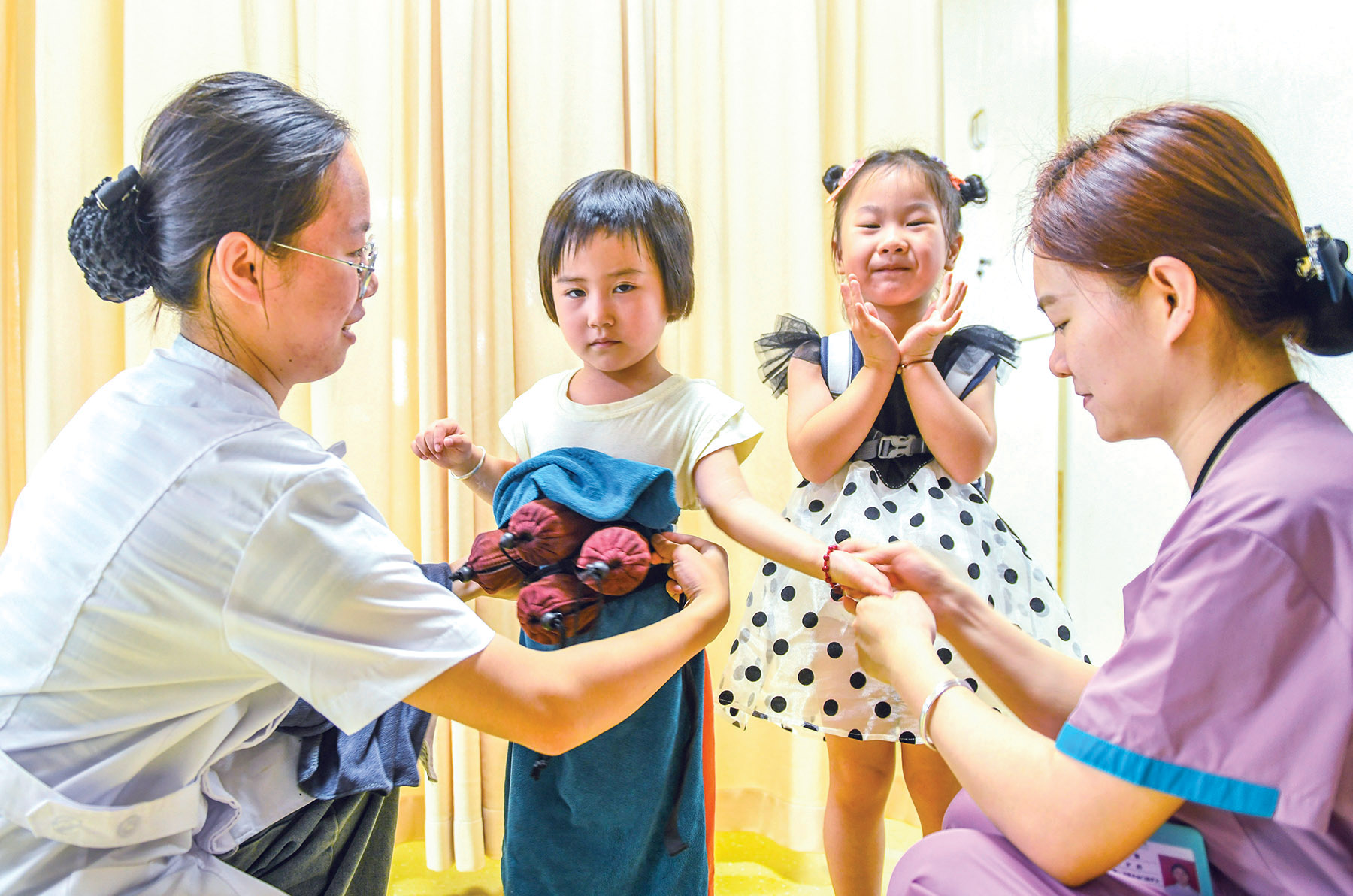
All tertiary public traditional Chinese medicine hospitals and at least 80 percent of secondary-level public TCM hospitals in China will be required to establish pediatric departments by the end of November, an official at the National Administration of Traditional Chinese Medicine said on Tuesday.
The nation follows a three-tier hospital structure, with tertiary hospitals at the highest level.
Ouyang Bo, deputy director of the administration's department of integrated traditional Chinese and Western medicine and ethnic group medicine, said that by the end of 2023, about 96 percent of tertiary TCM hospitals and 72 percent of secondary-level ones had already set up pediatric clinics.
The expansion of pediatric services in TCM hospitals is part of a broader two-year initiative, running through 2027, aimed at enhancing pediatric healthcare nationwide.
READ MORE: TCM in spotlight at WHA side event
Ouyang said the administration has also released a series of diagnostic and efficacy evaluation standards, including guidelines for treating adolescent idiopathic scoliosis and cough variant asthma in children.
In addition, the administration has supported 23 cities in piloting TCM interventions to address obesity in children and adolescents, as well as 26 cities and three provinces in piloting the use of TCM therapies for scoliosis.
A pilot program that uses 60 TCM treatments to combat childhood myopia has yielded positive outcomes, she added.
"Last year, 25.97 million toddlers age 3 and under accessed TCM services through dietary guidance and recommendations on daily activities," Ouyang said.
Since 2023, four pediatric TCM drugs have received market approval, she said.
Ouyang added that the administration will continue to advance pilot projects focused on controlling myopia, obesity and scoliosis. It will also aim to foster TCM pediatric experts and ramp up research into TCM pediatric drugs.
Official data shows that 3.8 percent of children age 6 and under and 7.9 percent of those age 6 to 17 are obese. In 1982, the obesity rate among children and adolescents age 7 to 17 was only 0.2 percent.
Rong Ping, vice-president of the First Teaching Hospital of the Tianjin University of Traditional Chinese Medicine, said obesity during childhood is associated with a higher risk of high blood pressure, respiratory and cardiovascular diseases and obstructive sleep apnea.
"Obese children also face a higher likelihood of sports injuries, fractures and joint pain," she said. "They are also relatively more prone to emotional irritability, low self-esteem, social withdrawal and declining social interaction skills."
ALSO READ: Xi says China committed to making traditional medicine better benefit world
From the perspective of TCM, Rong said that fostering healthy eating habits and using some medicated recipes, such as congee containing fresh lotus leaf and barley and tea made from lotus leaf, hawthorn and goji berry, can be helpful.
"It is important to avoid seeking rapid weight loss, which could hinder children's growth and development. We should also avoid overfocusing on the numbers on the weight scale and instead monitor overall growth and developmental indicators," she said.
"For obese children with severe complications, we recommend an integrated approach combining traditional Chinese and Western medicine," she added. "The advantage of traditional Chinese medicine lies in its ability to regulate body constitution, improve metabolism and offer long-term interventions."
Contact the writer at wangxiaoyu@chinadaily.com.cn


